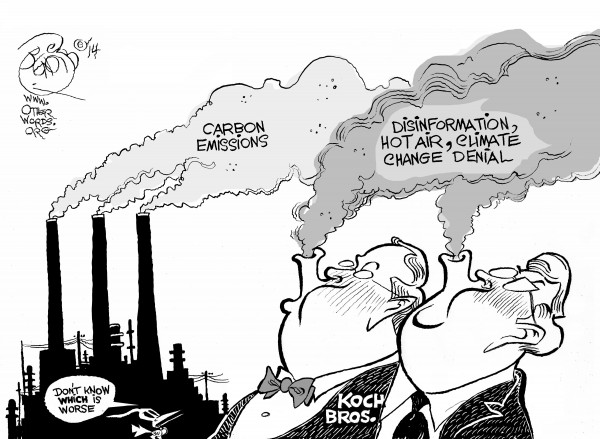The Obama Administration’s Clean Power Plan, released in June 2014 and seeking public comments until December 1, aims to reduce carbon emissions from existing power plants by 30 percent (below 2005 levels) by 2030. Under the rule, states are required to develop plans to meet specific standards devised by the EPA.
In the latest edition of Science, economists from the University of Chicago, Stanford, Yale, Harvard, MIT and the University of California-Berkeley and Davis have come together to give their take on the plan.
Specifically, they assess whether the plan will achieve its intended emissions reductions, and how it can do so in the most cost-effective manner.
“The Clean Power Plan demonstrates that the United States is serious about confronting climate change. It will provide the U.S. with critical leverage in the international climate negotiations next year in Paris,” says Michael Greenstone, one of the authors of the Science analysis and the director of the University of Chicago’s Energy Policy Institute at Chicago (EPIC).
The analysis – led by Meredith Fowlie of the University of California-Berkeley, Lawrence Goulder of Stanford and Matthew Kotchen of Yale – studied specific cost-effective actions that could be further supported.
The plan offers actions states could take, such as improving the efficiency of power plants, using more natural gas, expanding renewables, and creating energy efficiency programs for consumers. It is difficult to know which of these approaches will reduce emissions at the lowest cost. This is why it is so important that the plan also allows states to create regional carbon trading programs. Such regional cap-and-trade systems have worked well in the past in terms of reducing emissions at the lowest cost, the economists say. Several states already use this approach, like the Regional Greenhouse Gas Initiative (RGGI) in the northeast and California’s Cap-and Trade Program.
“While the EPA has allowed states to achieve emissions reductions through multiple approaches, the best way to minimize costs and facilitate economic growth is by joining regional trading programs. Even better would be if all states joined the same trading market,” Greenstone says. “The EPA should do everything possible to encourage all states to join together in a single market.”
Because of the current design of the plan, the economists also believe that there is an unnecessary risk that the intended emissions reductions will not be achieved. This is because, instead of directly specifying an emissions reduction target for states to meet, the plan proposes that states reduce their emissions intensity – the ratio of emissions released to electricity generated. That means, a state could help to meet the EPA’s requirement by increasing electricity generation.
Greenstone noted: “A better approach would be to assign a specific emissions cap for each state. This would provide greater certainty about the amount of emissions that would be reduced overall, and it would be easier for states to administer.”
The other authors that were part of this analysis include: Severin Borenstein, Lucas Davis and Catherine Wolfram, all of the University of California-Berkeley; Charles Kolstad, Michael Wara and Frank Wolak of Stanford; James Bushnell of the University of California-Davis; Christopher Knittel of MIT; and Robert Stavins of Harvard.
References:
Publication: M. Fowlie et al: An economic perspective on the EPA’s Clean Power Plan. Science, 2014.
Article Source: University of Chicago — EPA’s Clean Power Plan: Economic strengths, weaknesses, November 13, 2014
















Comments